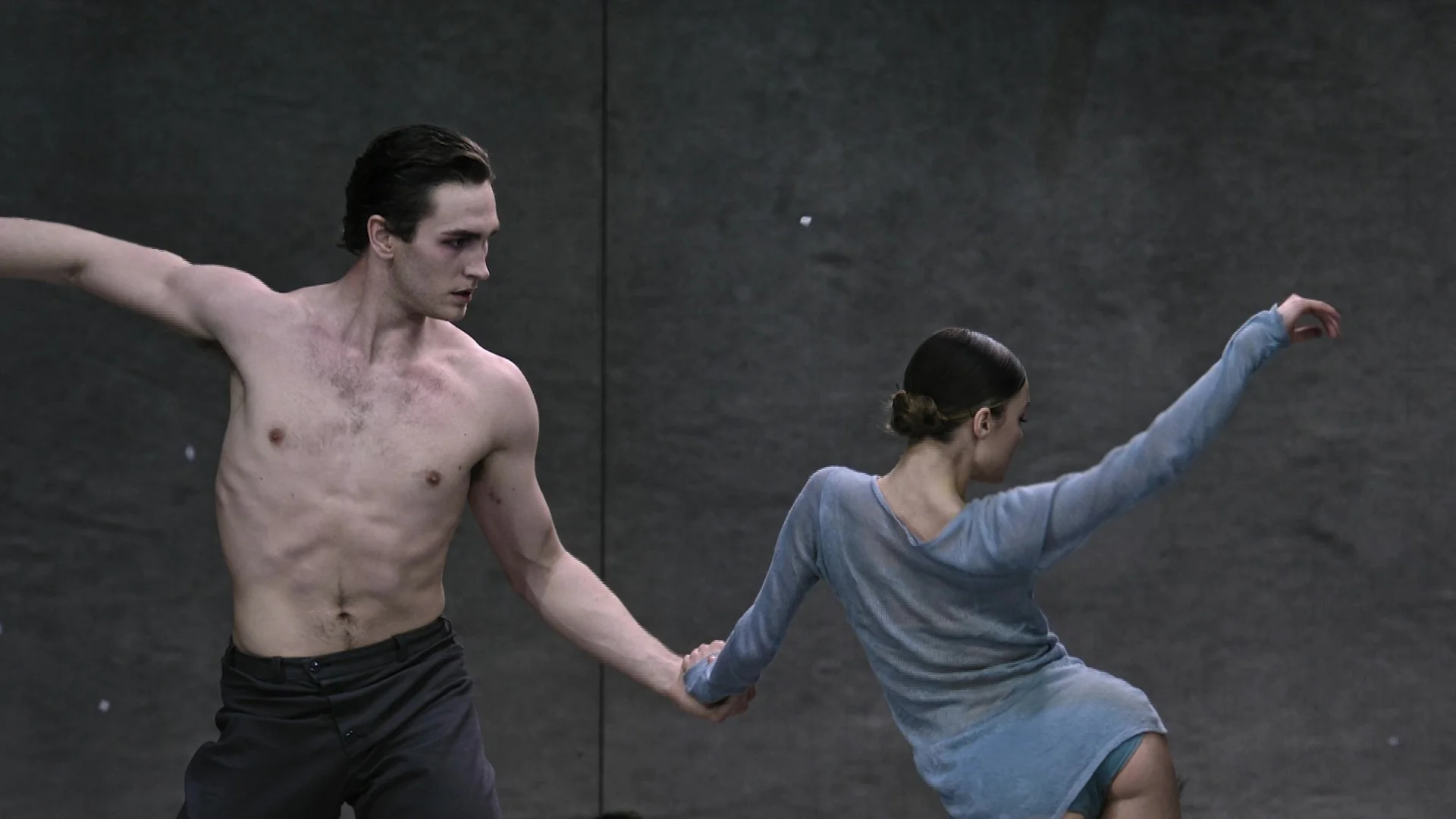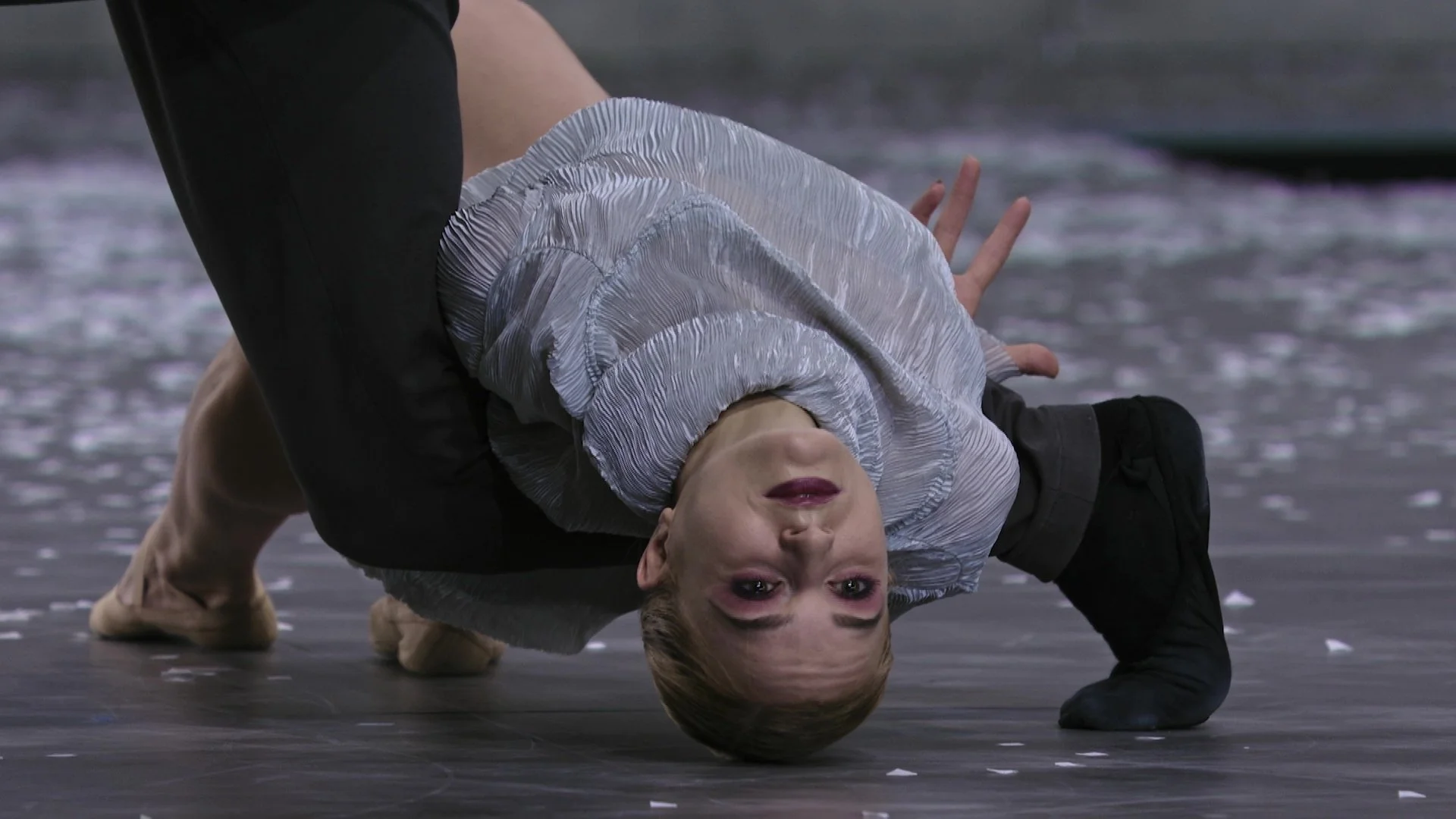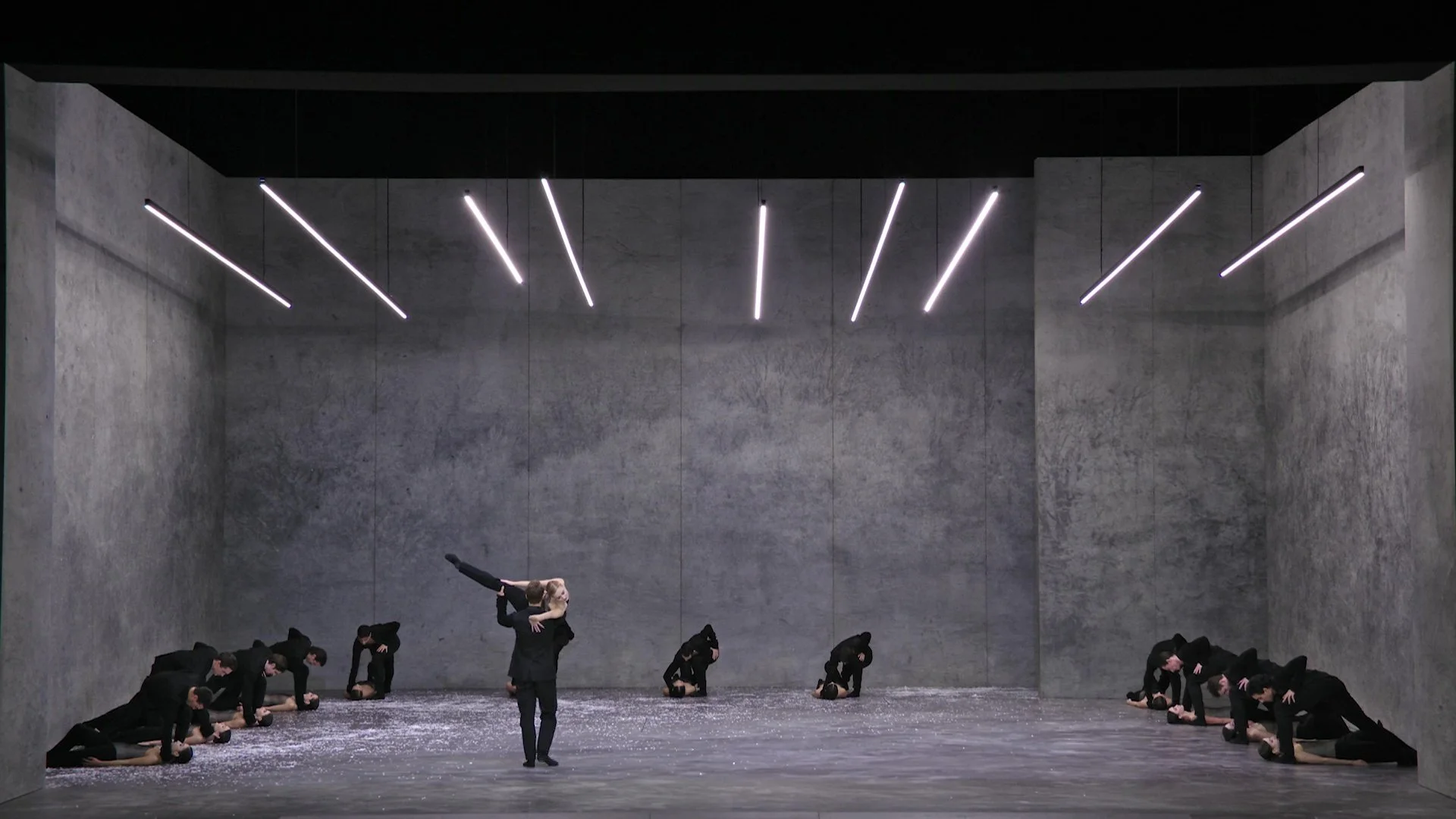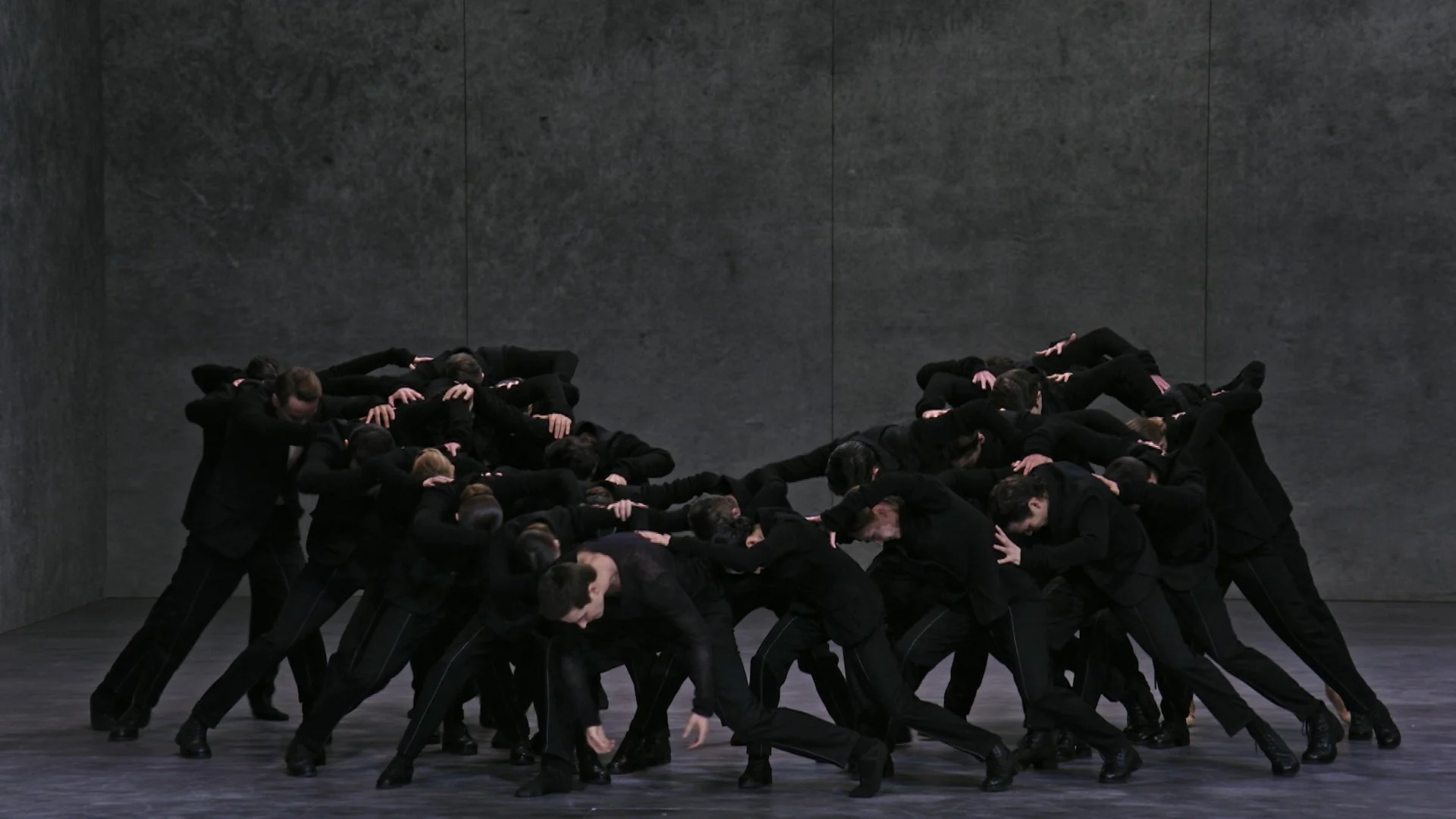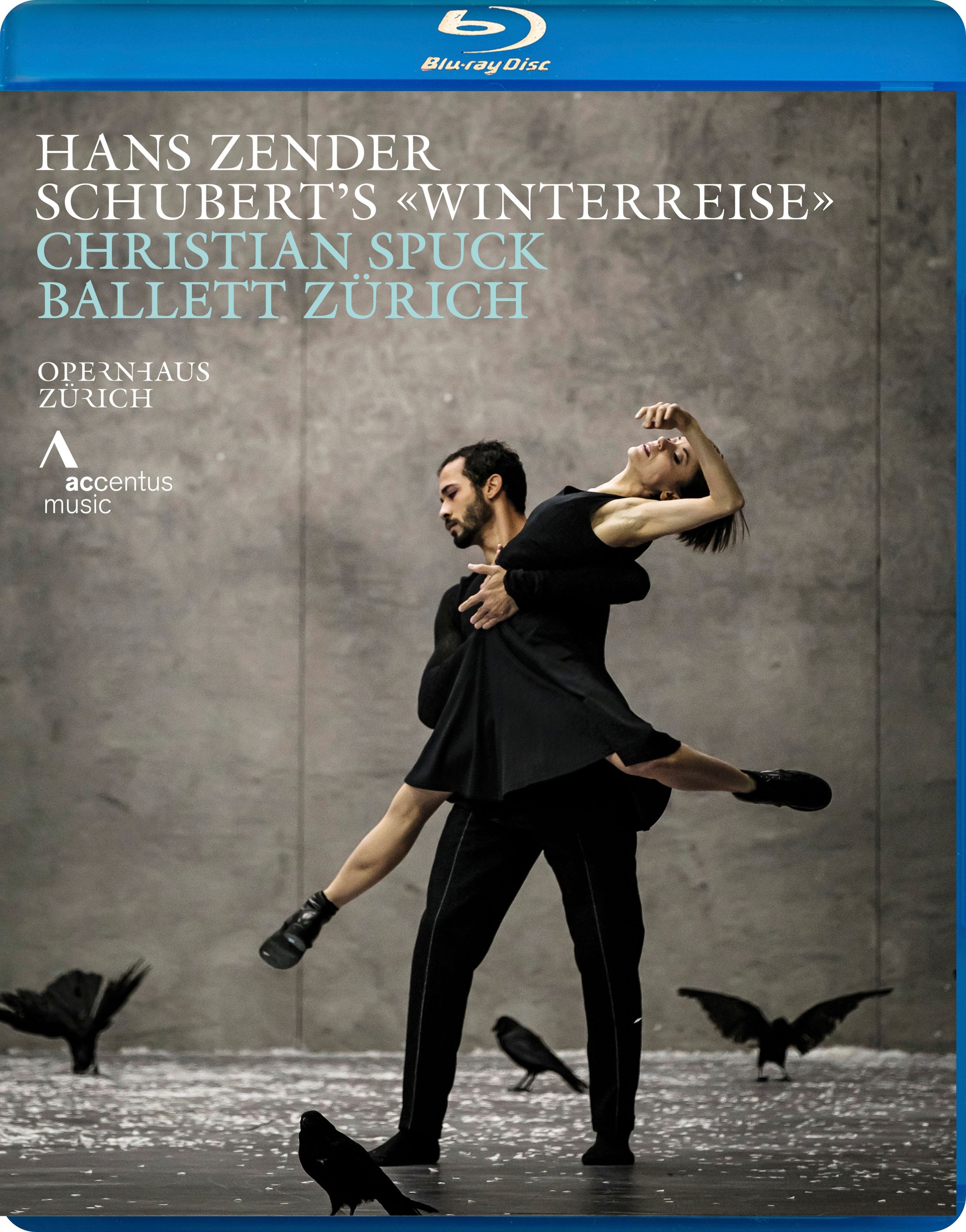
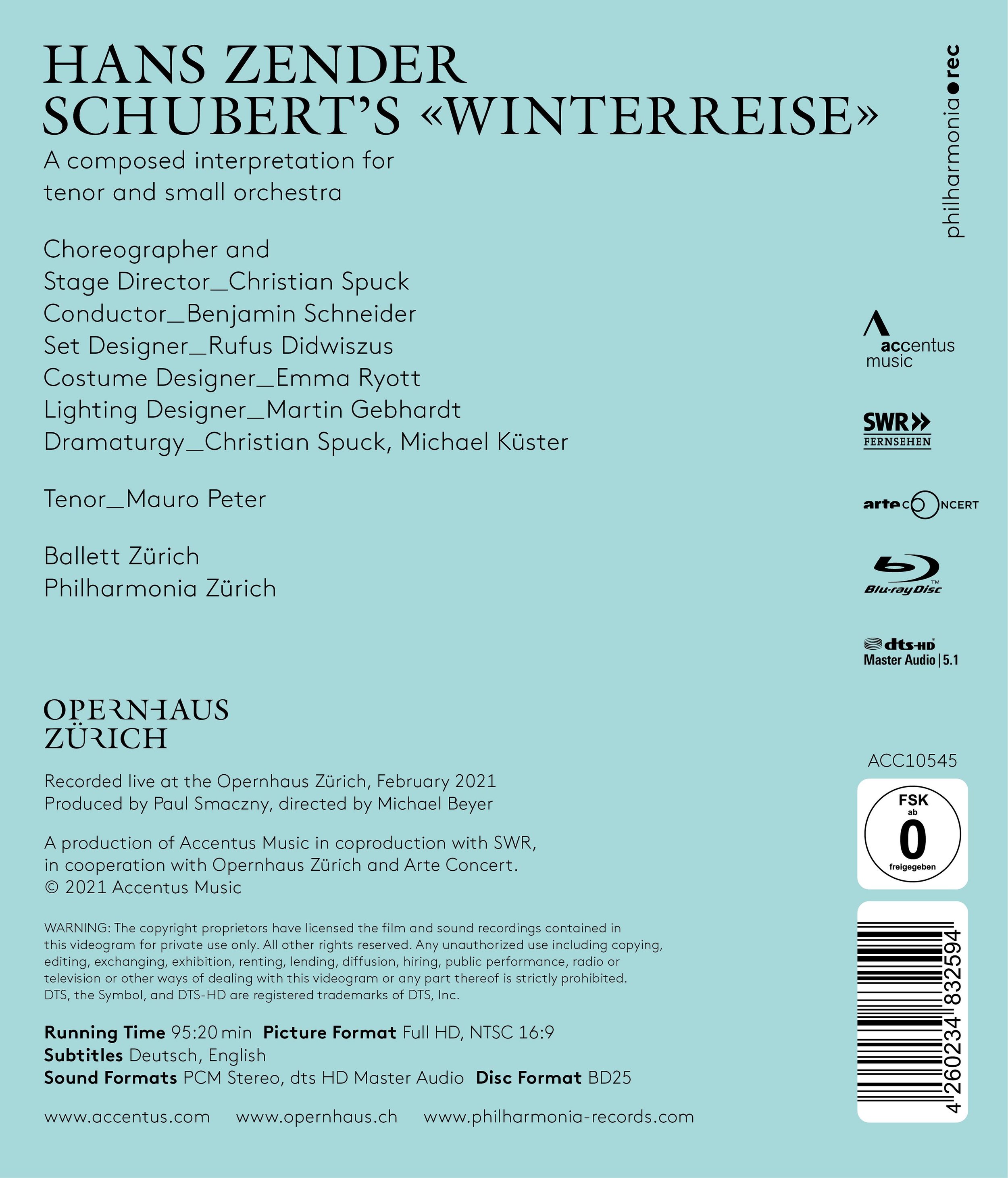
Schubert’s Winterreise song cycle ballet. Music is Hans Zender’s 1993 Winterreise for tenor and small orchestra, which is an interpretation of the Schubert song cycle for solo voice and piano. Choreographed and performed 2021 by Christian Spuck at the Ballett Zürich. Mauro Peter sings tenor. Benjamin Schneider conducts forces from the Philharmonia Zürich. Set by Rufus Didwiszus; costumes by Emma Ryott; lighting by Martin Gebhardt; dramaturgy by Christian Spuck and Michael Küster. Directed for TV by Michael Beyer; produced by Paul Smaczny. Sung in German. Subtitles in German and English. Released 2021, disc has 5.1 dts-HD Master Audio sound. Grade: A
Here we enjoy the product of 5 geniuses: (1) Wilhelm Müller, who wrote the Winterreise poetry, (2) Schubert, who published the original song cycle in 1828, (3) Hans Zender, who composed his interpretation of the music in 1993, (4) Christian Spuck, who put all this on the ballet stage in 2019, and (5) Mauro Peter, seen below, who sings the entire cycle for Zender’s composition by memory standing in the pit or wandering about the stage:
I think every word of the poetry is included on the disc with subtitles in German and English. When watching this with subtitles on, I found I was giving too much attention to the little words and missing the dancing. So I turned the subtitles off. If you don’t know the story, here goes: A young man is forced to leave his beloved when her family marries her up to a rich guy. The rejected lover must return to his parents home on foot. Unfortunately, it’s the middle of a brutal German winter with the whole countryside in deep freeze. Crushed, broke, starving, and freezing, our hero makes his way alone on his trek in winter through 24 songs of grief. Schubert wrote all the songs while he was age 30 and knew he would likely soon die from syphilis. He died at age 31.
The songs tell the story. Spuck in his dancing ignores the story and speaks only to the young man’s grief. The only allusion to the story told on stage would be an mage that comes up often of some poor soul slowly making his or her way along a painful path that we cannot see:
And sometimes there are multiple wanderers:
Not burdened by a narrative, Spuck creates an astonishing variety of steps and formations for his dancers, who all seem utterly committed to making us understand what grief is. We start with a few duets:
Now we move up the food chain to larger groups. Next is a portrait of one of a group of forest bushes:
The rage of the imagination:
Now we move on to larger forces. Note the wanderer against the wall on the left:
The wanderer can’t forget the love he had to leave:
Spuck comes up with a variety of costumes and actions:
Spuck’s most dramatic images involve crows. In one of the poems, our hero notes a crow has been dutifully tracking him for days. The crow expects the wanderer to freeze to death. Then with plenty to eat, the crow will survive the winter. At least the crow is faithful to the death:
If you know the song cycle for solo voice and piano, then you can see from the screenshots how powerful the dancing is. But I can only tell you how piercing Hans Zender’s music is. Zender wrote a fair amount of contemporary music, and I think this is his greatest hit. My impression is that the solo tenor here follows Schubert closely. If that’s correct, then Zender’s interpretation was to update the accompaniment. Accentus Music provides no information about the music with the disc. I think the instrumentation is: 1 first violin, 1 second violin, 1 cello, 1 double bass, harp, guitar, accordion, 2 oboes, 2 flutes, 2 clarinets, 2 bassoons, 1 trumpet, 1 trombone, 1 horn, percussion, and timpani. You have to get the disc to hear how exciting, wild, and moving these forces are in expanding on poor Schubert’s solo piano score.
Quite a while ago, I saw (by accident) a Vimeo trailer of this work (not from this Michael Beyer recording) on my PC workstation. PQ was OK, SQ was horrible. But I never forget the Spuck’s dancers, and I said a little prayer asking for this in Blu-ray. Prayer answered. Spuck’s choreography and his dancers are terrific throughout. This fully deserved the Prix Benois de la Danse it received in 2019.
The recording I’m reviewing here was made by Michael Beyer early in 2021. My heart sank when I saw this was by Beyer, because I have slammed him innumerable times on this website for DVDitis, that vile disease that occurs when a video made for DVD viewers also gets published in Blu-ray as an additional profit center. (Mike, I know it’s not your fault—you are just following orders.)
So I ran the numbers on Mike’s video file with a Wonk Ballet Worksheet. Surprise! The pace here is 9 seconds per clip. This isn’t great, but it avoids an outright diagnosis of DVDitis. And Mike has the whole body of the dancers in 79% of his shots, which is excellent. That’s a big step in right direction for Beyer.
Time for a grade. I think you can see from the screenshots what an impressive dance work this is. The music is also fantastic. PQ and SQ are excellent. The subtitles are fine also for those who will benefit from them. So we start with A+. I deduct a “+” for Beyer’s mediocre pace and wind up with an A. This is a good, but Smaczny and Beyer missed their chance to made a sublime success of this.
OR








